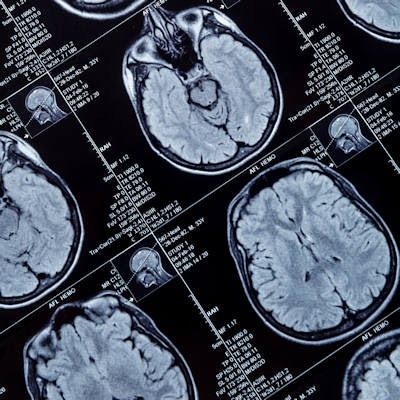
Researchers have used MRI to investigate biomarkers that may serve as prognostic markers for individuals with early multiple sclerosis (MS) -- and thus improve patient care and treatment planning.
A team led by Vinzenz Fleischer, MD, of University Medical Center of the Johannes Gutenberg University Mainz in Germany, hopes that the study results will help clinicians better understand the disease. Their research was published August 29 in the journal Brain.
"Our findings provide evidence [of biomarkers that at one year follow up disclose] relevant information about subsequent clinical worsening in RRMS," the team wrote.
Multiple sclerosis is a chronic immune disease of the central nervous system marked by inflammation, demyelination and neurodegeneration -- all of which can lead to progressive disability, the team explained. But predicting how the disease will progress can be tricky, and "biomarkers are needed that can help to distinguish individuals who will show rapid disability accumulation from those who will remain stable," Fleischer and colleagues noted.
The investigators conducted a study that included 406 individuals with relapsing-remitting MS (RRMS) and a group of 153 healthy subjects, all of whom underwent MRI at baseline and a year after baseline, and were followed for five years. They assessed gray matter atrophy and white-matter lesion load at one year after initial MRI exam using the area under the receiver operating curve (AUC) measure; patients were also evaluated with a tool called the Expanded Disability Status Scale (EDSS). Finally, the team tracked brain network health measures such as global efficiency and transitivity to identify any properties related to EDSS progression.
The team found that patients with relapsing-remitting MS who experienced EDSS progression over five years had statistically significant lower network degree and global efficiency AUC values compared with health controls and to patients without this progression.
| ROC data from MS patients with EDSS progression over five years | ||
| ROC measure | AUC | p-value |
| Network degree | 0.67 | < 0.001 |
| Global efficiency | 0.68 | < 0.001 |
| Gray matter atrophy | 0.55 | 0.1 |
| White matter lesion load | 0.5 | 0.91 |
The study illuminates the progressive nature of MS, according to the authors.
"Our findings provide the brain network equivalent to accumulating evidence from neuropathological, conventional imaging and recent clinical studies suggesting a more insidious structural damage in MS across all phenotypes."
The complete study can be found here.




.fFmgij6Hin.png?auto=compress%2Cformat&fit=crop&h=100&q=70&w=100)




.fFmgij6Hin.png?auto=compress%2Cformat&fit=crop&h=167&q=70&w=250)











